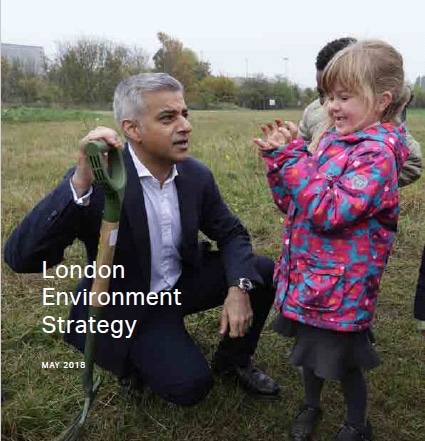Mandy Rudd, GiGL Chief Executive

The draft Mayor’s London Environment Strategy was published last summer, and after a 14 week consultation period that ran from August to November 2017, which received several thousand responses including ours, the final strategy was published at the end of May 2018.
The remit of the strategy is very broad, and brings together a range of environmental topics including the quality of air, water and green space, and sets out the benefits of improving them for London’s human inhabitants via a range of short and long-term actions. It contains strong links to the London Plan and Mayor’s Transport Strategy, the latter having already led to us working with Transport for London on implementing a system to inform and monitor their policy commitment to net gain for biodiversity.
We are delighted with the very clear commitment the Mayor makes to our working relationship and what he expects from other organisations in London, specifically:
“The Mayor will continue to support GiGL, and expects all London boroughs and other major land managers to enter into data exchange agreements with GiGL” (page 190)
The Strategy is also very clear about the importance of our role in collating and managing data and what they can be used for:
“The Biodiversity Strategy also recognised the importance of collecting, managing and sharing natural environment data. It set the policy framework that enabled the establishment of a local environmental records centre, in the form of Greenspace Information for Greater London (GiGL), to act as a central repository and manager of data by collecting and curating data on a London-wide basis. GiGL has since been established as a Community Interest Company (CiC), which enables its stakeholders to access data to monitor the effectiveness and impact of the policies in this strategy. It also provides cost effective mechanism for boroughs and others to maintain their own data.” (page 190)
Our commitment to this role involves us continuously developing our understanding of how we can use the data to underpin the work and understanding of our stakeholders. They need to be able to trust outputs in order for them to influence their work, and we spend a great deal of time on ensuring we play our part locally, regionally and nationally. For example, we manage species data to standards developed and set on behalf of everyone generating and consuming these data by the National Biodiversity Network Trust. We have also been accredited by the Association of Local Environmental Records Centres (ALERC) which means we have successfully met a set of criteria that demonstrate we are running the business effectively and efficiently, and meet the needs of our stakeholders via the services that we provide.
There is more detailed collaboration with our colleagues in the records centres in the south east of England on standards for site-based data such as habitats and designated sites. Through working together, we can ensure that the attributes of cross-boundary datasets provided to regional and national partners are comparable from one county to the next regardless of the local approaches to data collection. These standards ensure local data are informing regional and national action and are a selling point for what we do as a group for partners that we have in common.
Further to these standards, we have a data validation and verification schedule that involves us working with local and national experts to ensure that species identifications are accurate, habitat data are broadly correct regardless of when they were generated, and the open space and non-statutory site evidence bases that we are responsible for are updated when changes are made by the relevant authorities. This enables us to be confident that the data are fit for purpose and saves partners from running data mining exercises that both duplicate effort and result in multiple approaches to the data owners. The Strategy is a good example of this, as both the draft and final versions contain statistics and maps based on GiGL datasets that have been over twenty years in the making. This reliability of these data will be further improved when all boroughs and major land managers are partners.
So what next? The Strategy presents us with an opportunity to develop services in relation to the principles around net gain for biodiversity, in addition to existing services that help our stakeholders meet their commitments under the National Planning Policy Framework (NPPF) and the London Plan, which tend to be in relation to avoiding net loss. We will be collaborating with the Greater London Authority and other key stakeholders on aspects of delivery including updating London’s priority species list, maintaining the suite of datasets that the GLA require access to, as well as further exploring our role in establishing an effective monitoring framework, which fits with our community interest company commitments to generate enough income to lead on this for the capital.
